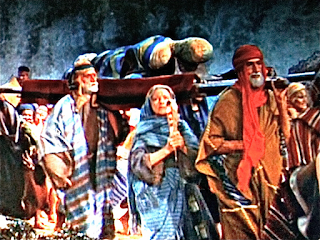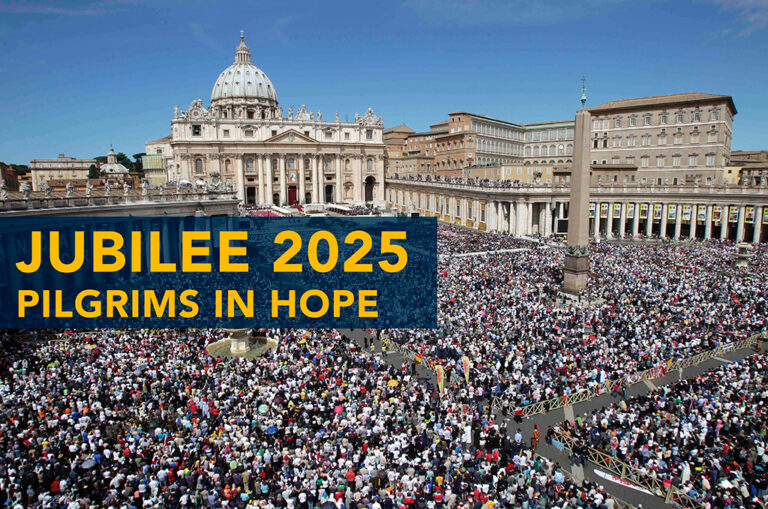Good Friday & the Hidden Meanings of “Golgotha”: Whose Skull Was It?

On Liturgy and Orthodoxy, the Synod Document Forgot Our Voices
March 31, 2018
Holy Saturday: Living in Limbo
March 31, 2018
By Scott Smith, Blog, March 30, 2018
There is a lot going on during Christ’s Crucifixion just beneath the surface. You know that Christ is crucified on Golgotha, the Place of the Skull. But who’s skull is it? Also, why was Christ crucified at this particular spot?
Therefore as sin came into the world through one man and death through sin, and so death spread to all men because all men sinned … death reigned from Adam to Moses, even over those whose sins were not like the transgression of Adam, who was a type of the one who was to come.
All sin came into the world through one man, Adam. Wouldn’t it be perfect if all sin was conquered by one man? It was.
Wouldn’t it be even more perfect if …
Wouldn’t it be perfect if there was, not only this poetic symmetry, but a physical connection, as well? Wouldn’t it be perfect if Adam somehow was there when Jesus, the New Adam, redeemed the world that was lost by Adam’s sin?
What if I told you Adam was there?
THE JEWS & THE RELICS [BONES] OF THE PATRIARCHS
The Jews – this is actually an inaccurate term historically. When we talk about the Jews before the Roman period, it is more accurate to call them the Hebrews, the Semitic people, or the Israelites, depending on the period.
Where did the word “Semitic” come from? Where did the word “Hebrew” come from? Where do these terms come from?
“Semitic” comes from the name of one of the sons of Noah: Shem. We’ll come back to him in a minute. The Semitic people (or Semites) are all the descendants of Shem. [source] “Hebrews” comes from the name of Shem’s great-grandson, Eber. The Hebrews are all the descendants of Eber.[source]
The Hebrews, the Semitic people, the Israelites – all of them – were very careful with the bones of their forebears, the Patriarchs.
The Israelites carried the bones of the Patriarch Joseph with them through their wanderings in the desert. Through forty years of wandering in the desert, through all manner of apostasies and failings, the Israelites nevertheless persevered with Joseph’s bones. They abandoned the God of Joseph from time to time, but they never abandoned the bones of Joseph.
Thank God for small favors, right? But this was not a small thing, as we will see.
|
|
Remember this scene from The Ten Commandments? Here, they arecarrying the bones of Joseph through the parted waters of the Red Sea |
See, for example, Exodus 13:19:
And Moses took the bones of Joseph with him; for Joseph had solemnly sworn the people of Israel, saying, “God will visit you; then you must carry my bones with you from here.”
So the Israelites took special care for the bones of the Patriarch Joseph, but what about the Father of Fathers, the Patriarch of Patriarchs, Adam, himself?
Incidentally, if you’re wondering about what happened to the bones of Moses, whether there is a tomb of Moses, check out this article, the Assumption of Moses.
WHAT ABOUT THE BONES OF ADAM?
There is an amazing tradition among the Jews at the time of Jesus. Noah confided the skull of Adam to his son, Shem – remember Shem? I told you we would circle back to Shem.
Shem, then, passed on the skull of Adam to Melchizedek, the priest of Salem.
SIDENOTE: THE NEW ARK OF NOAH
Before we move on, let’s think about this. If Noah passed on the skull of Adam to his son, it follows that the skull of Adam was carried inside the Ark of Noah. Take this thought a step further. Who is the New Ark of Noah? This is Mary, who is also the New Ark of the Covenant. What did Mary, the New Ark, carry within her? Not just the skull of the New Adam, but the New Adam, himself. For more on Mary as the New Ark, check out this article – so many connections!
|
|
Mosaic of Melchizedek, Basilica of San Vitale, Ravenna |
MELCHIZEDEK & THE BONES OF ADAM
Where, then, did Melchizedek eventually place the Bones of Adam? I think you can already guess at this, but hold on …
Who was Melchizedek?
First off, in the Letter to the Hebrews – Hebrews! – Jesus is called a “priest according to the Order of Melchizedek” (7:13-17). Also, Psalm 110 prophesies “You are a priest forever according to the order of Melchizedek” (Ps 110:1-4).
The name “Melchizedek” means “king of rightousness,” and combines the words for “king” (melek) and “righteousness” (zedek) or “priest.” [source] Melchizedek means “king of righteousness” or “king-priest.” This is, in part, why we are baptized as “priest, prophet, king.”
A priest “according to the order of Melchizedek” is distinguished from a priest according to the order of Levi, a Levitical priest. Every Hebrew father was a priest according to the “Order of Melchizedek.” Following the failings of the Israelites, only those fathers of the Tribe of Levi were allowed to be priest. God’s original plan, however, was for all fathers to be priests. This is restored through Christ in the Sacrament of Baptism.
Melchizedek, therefore, was a priest, according to the line of Adam. Christ restores this.
There’s a whole lot more here, too. We’re just skimming the surface.
Where Was Salem?
Melchizedek was the Priest and King of Salem, the King of Peace. Hebrews 7:1-3 tell us the following:
For this Melchiz′edek, king of Salem, priest of the Most High God, met Abraham returning from the slaughter of the kings and blessed him; and to him Abraham apportioned a tenth part of everything. He is first, by translation of his name, king of righteousness, and then he is also king of Salem, that is, king of peace. He is without father or mother or genealogy, and has neither beginning of days nor end of life, but resembling the Son of God he continues a priest for ever.
Salem, like Shalom, means “peace.” This is why Melchizedek is called “King of Peace.” Does this sound reminiscent of Jesus’ title, “Prince of Peace”? See, for example, Isaiah 9:6.
Later, the Hebrews would build a city at Salem. Guess what the Hebrew word for “City of Peace” is? [source]
Jerusalem!
So Where Did Melchizedek Place the Bones of Adam?
Melchizedek, King of Salem, placed the bones of Adam in his city, Jerusalem. According to legend, Melchizedek actually placed the bones of Adam at Golgotha! [source]
The Talmudists and the Church Fathers were well aware of this tradition. The Evangelists, too, Matthew, Mark, Luke, and John, also lend credence to the tradition, as they speak of one and not of many skulls. Golgotha is the place of the skull, i.e. one famous skull, not a general place of execution strewn with skulls. [source]
WHERE DOES THE WORD “CALVARY” COME FROM?
The word “Calvary” (Latin Calvaria) means “a skull”. Calvaria and the Greek form Kranion, like “cranium,” are equivalents for the original Hebrew word Golgotha. [source]
So, “Calvary,” too, is a reference to the “Place of the Skull.”
|
|
The Church of the Holy Sepulchre in Jerusalem |
THE CHURCH OF THE HOLY SEPULCHRE: WHAT LIES BENEATH THE MOUNT OF CALVARY?
The Church of Holy Sepulchre contains within it two of the holiest sites in Christianity: (1) Calvary or Golgotha, where Jesus was crucified, and (2) the tomb (of Joseph) where Jesus was buried and, ultimately, resurrected. It contains within it four (some say five) Stations of the Cross.
|
|
The two holy sites contained at the Church of the Holy Sepulchre |











